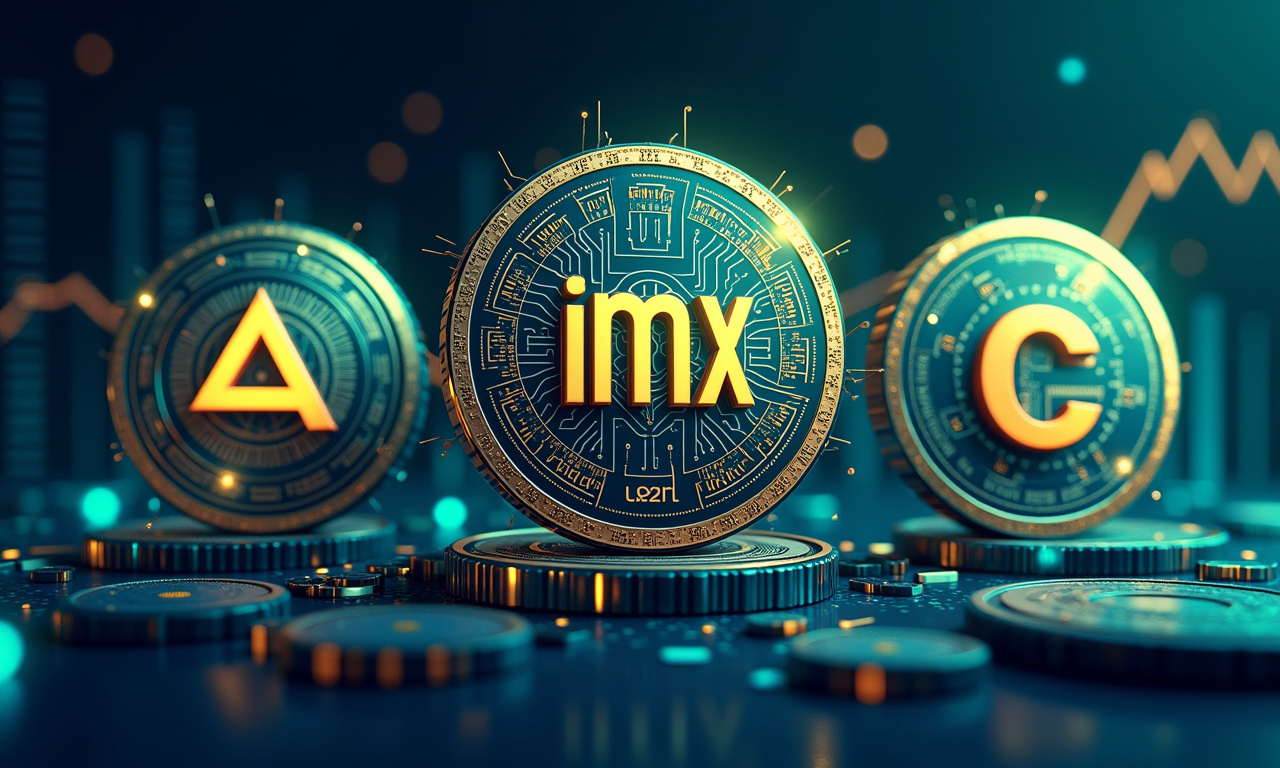As this world of innovation continues to rapidly transform, new breakthroughs and obstacles are surfacing each day. While Bitcoin and Ethereum have established themselves as leading cryptocurrencies, a looming threat on the horizon could significantly impact their future: quantum computing. Li Wei, a blockchain content strategist deeply familiar with China’s technology sector, explores the potential quantum apocalypse and offers insights for investors to navigate this complex landscape.
The Impending Quantum Challenge: Preparing Your Portfolio for Q-Day
Quantum computing opens up an incredible ability to perform calculations—classical computers just can’t compete. Despite being an impressive new tool, this extraordinary power is a singular threat to the cryptographic underpinnings of both Bitcoin and Ethereum. As noted by ARC’s Li Wei, there is a compelling need to understand and prepare for this looming disruption, called “Q-Day.”
Quantum Risks to Bitcoin and Ethereum
Quantum computers use the uniquely powerful phenomena of quantum mechanics to harness computational speed for tackling problems that were once unsolvable at any feasible speed. Today, this capability is a threat to often touted blockchain/cryptocurrency security. Inherent Risks of Blockchain Technology Security and privacy Blockchain technology relies on cryptographic algorithms to secure transactions and protect wallets.
Our experts are predicting a one-in-three Q-Day before 2035. Four years later, in 2016, NIST began a multi-phased competition for the US. They sought to create new quantum-proof encryption algorithms, underscoring the urgency of this threat from quantum computing. A Q-Day PC could have the power to crack today’s lost Bitcoin wallets. This innovation would release millions of previously-unspendable Bitcoins, triggering a huge market sell-off and a corresponding price collapse.
- Breaking Encryption: Quantum computers can potentially break the encryption algorithms currently used by Bitcoin and Ethereum, such as the Elliptic Curve Digital Signature Algorithm (ECDSA).
- Wallet Vulnerability: If quantum computers can crack these algorithms, they could gain access to private keys, allowing them to steal funds from Bitcoin and Ethereum wallets.
- Historical Data Risk: Even if Bitcoin and Ethereum upgrade their protocols to become quantum-resistant, historical transaction data remains vulnerable. A sufficiently powerful quantum computer could retrospectively decrypt past transactions.
- Lost Bitcoin Recovery: If quantum tech develops as expected, over 3.5 million Bitcoins currently deemed lost could become accessible again. While this sounds positive, it could destabilize the market.
- Eavesdropping: A quantum computer could let an adversary eavesdrop on classified military data in real-time. This highlights the power and potential misuse of such technology.
Li Wei suggests the following strategies for investors:
Strategies for Mitigating Quantum Vulnerability
That said, upgrading existing blockchains—Bitcoin and Ethereum, for example—to be quantum-resistant is a tall order. That’s because it takes a hard fork, an extensive change to the blockchain’s protocol.
- Assess Quantum Resistance: Investors should research the quantum resistance of their cryptocurrency holdings. Some newer cryptocurrencies are being developed with quantum-resistant algorithms.
- Explore Quantum-Resistant Solutions: Consider alternative quantum-resistant solutions like Quranium's QSafe wallet. These solutions use advanced cryptographic techniques designed to withstand attacks from quantum computers.
- Stay Informed: Keep up-to-date with the latest developments in quantum computing and blockchain technology. Follow industry experts and news sources to stay informed about potential threats and solutions.
- Diversification: Diversify your cryptocurrency portfolio to include assets that are more resistant to quantum attacks. This can help reduce your overall risk.
- Advocate for Upgrades: Support efforts to upgrade existing blockchains like Bitcoin and Ethereum to incorporate quantum-resistant cryptography.
Ethereum’s potential hard fork to make the network quantum safe is an encouraging sign. The timeline for implementation is still unclear, and there are significant technical and logistical hurdles to address.
Institutional investment in Bitcoin and Ethereum has grown significantly in recent years, bringing increased legitimacy and stability to the market. The long-term risks presented by quantum computing may wash away these achievements.
- Consensus: Achieving consensus among the network participants can be difficult, as some may resist the changes.
- Compatibility: Ensuring compatibility with existing wallets and applications is crucial to avoid disruptions.
- Development Time: Developing and implementing quantum-resistant algorithms can take significant time and resources.
Institutional investors, including hedge funds, pension funds, and corporations, are rapidly directing capital into Bitcoin and Ethereum. This trend is driven by:
Institutional Investments vs. Long-Term Risks
As useful as quantum computing can be, Li Wei cautions that these institutional investments may all be in jeopardy if vulnerabilities arising from quantum computing are not mitigated. Making improvements to our physical infrastructure often takes decades, and some of that infrastructure has vulnerable cryptography in areas that simply cannot be updated. Public bodies like the UK’s National Health Service are still using hardware and software from the 1990s, highlighting the slow pace of technological upgrades.
Current Trends in Institutional Flows
A successful attack could lead to:
- Growing Acceptance: Cryptocurrencies are becoming more widely accepted as legitimate asset classes.
- Potential Returns: Bitcoin and Ethereum offer the potential for high returns, attracting institutional investors seeking to diversify their portfolios.
- Inflation Hedge: Some investors view Bitcoin as a hedge against inflation, given its limited supply.
Some people even put the odds at 15% that Q-Day has already occurred in jest. If Q-Day occurs before this hard fork, there’s no way to prevent bitcoin from dropping to zero. That’s why it’s so critical to act before the danger strikes to prevent and reduce the risk.
Analyzing the Impact on Market Stability
AI-driven solutions will boost security, improve operational efficiency, and open up new avenues for innovation.
- Loss of Confidence: Investors could lose confidence in the security of cryptocurrencies, leading to a market sell-off.
- Price Crash: The price of Bitcoin and Ethereum could crash, wiping out billions of dollars in value.
- Regulatory Scrutiny: Governments could increase regulatory scrutiny of cryptocurrencies, potentially hindering their adoption.
AI is being used in various ways to improve on-chain economies, including:
The Role of AI in Shaping On-Chain Economies
Together, these AI-driven innovations will usher in a more secure and more efficient on-chain ecosystem. They can help mitigate some of the risks resulting from quantum computing.
Innovations Driven by Artificial Intelligence
The future of on-chain economic models will undoubtedly be shaped by both quantum computing and AI. As quantum computers get more powerful, AI will be applied to create new quantum-resistant cryptographic solutions.
- Fraud Detection: AI algorithms can analyze transaction data to detect and prevent fraudulent activities.
- Smart Contracts: AI can be used to create more sophisticated and secure smart contracts.
- Trading Bots: AI-powered trading bots can execute trades automatically, optimizing returns and reducing risk.
- Risk Management: AI can assess and manage risks associated with cryptocurrency investments.
Bringing AI into on-chain economies has the potential to deeply fortify and pioneer Web3’s ecosystem. This improved ecosystem will be far more capable of meeting the quantum computing challenges before us. By remaining educated and vigilant, investors can successfully maneuver in this dangerous territory and keep their digital assets safe.
Future Prospects for On-Chain Economic Models
Li Wei’s expertise and perspective were invaluable in shining a light on this emerging quantum computing threat and what we can do to prevent it from being a danger. Investors can safeguard their assets by analyzing the quantum resistance of their holdings. They need to look beyond conventional options and keep an eye on the horizon so they’re equipped when the quantum apocalypse potentially looms large in the fast-changing world of cryptocurrencies.
AI can also play a role in:
- Developing new consensus mechanisms: AI can help design more efficient and secure consensus mechanisms that are resistant to quantum attacks.
- Optimizing blockchain performance: AI can analyze blockchain data to identify bottlenecks and optimize performance.
- Creating personalized investment strategies: AI can develop personalized investment strategies based on an individual's risk tolerance and investment goals.
The integration of AI into on-chain economies has the potential to create a more resilient and innovative ecosystem, capable of withstanding the challenges posed by quantum computing. By staying informed and proactive, investors can navigate this complex landscape and protect their cryptocurrency investments.
Li Wei's insights underscore the importance of understanding the quantum computing threat and taking steps to mitigate the risks. By assessing the quantum resistance of their holdings, exploring alternative solutions, and staying informed about the latest developments, investors can prepare for the potential quantum apocalypse and safeguard their investments in the evolving world of cryptocurrency.




